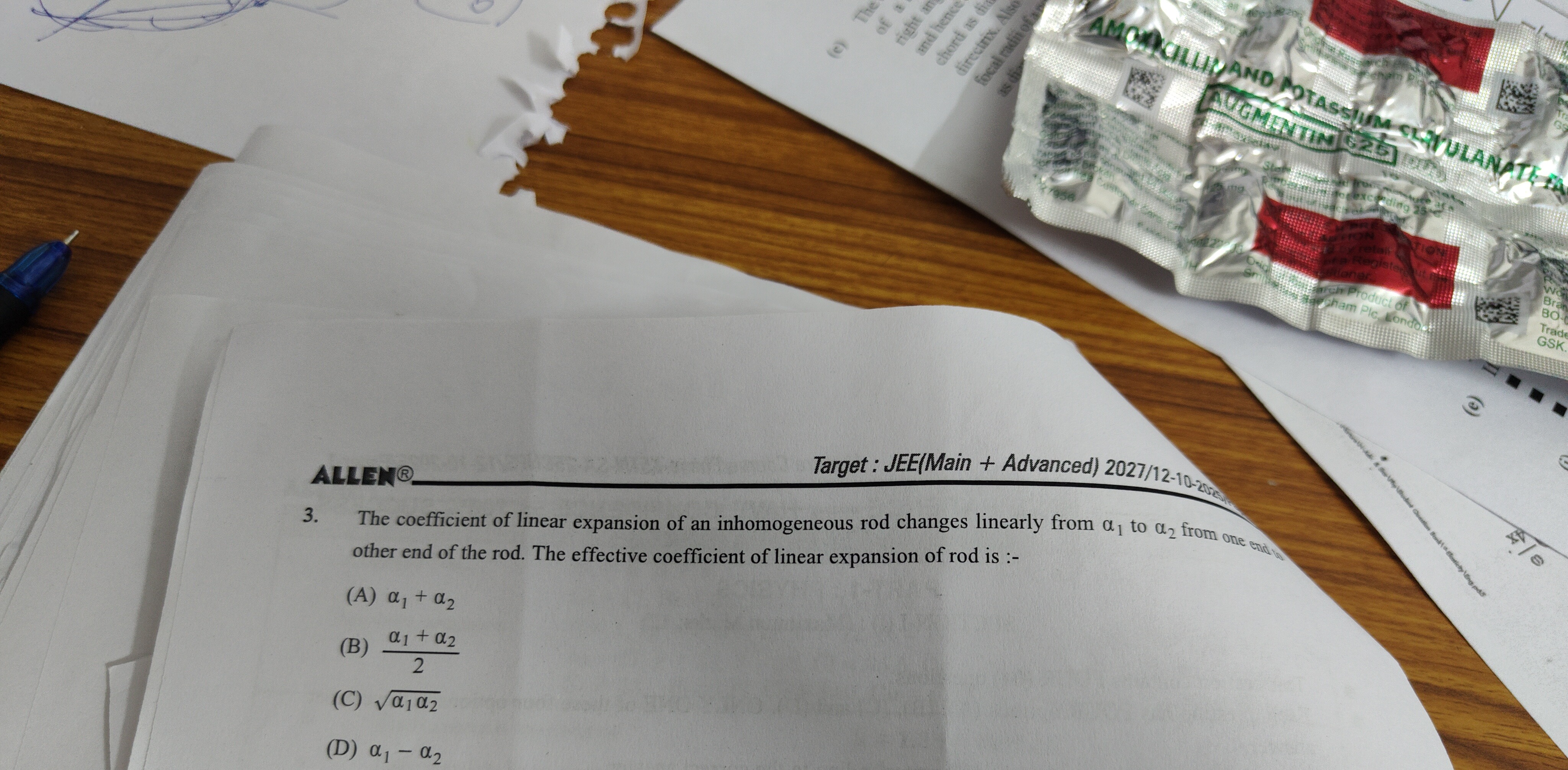Question
Question: The coefficient of linear expansion of an inhomogeneous rod changes linearly from $\alpha_1$ to $\al...
The coefficient of linear expansion of an inhomogeneous rod changes linearly from α1 to α2 from one end to other end of the rod. The effective coefficient of linear expansion of rod is :-

α1+α2
2α1+α2
α1α2
α1−α2
2α1+α2
Solution
The coefficient of linear expansion α varies linearly along the length L of the rod from α1 to α2. Let α(x) be the coefficient at a distance x from one end. We can express α(x) as: α(x)=α1+Lα2−α1x
The change in length d(ΔL) of a small segment dx due to a temperature change ΔT is given by d(ΔL)=α(x)dxΔT. The total change in length of the rod, ΔL, is the integral of d(ΔL) over the entire length of the rod: ΔL=∫0Lα(x)dxΔT
The effective coefficient of linear expansion, αeff, is defined by the relation ΔL=αeffLΔT. Equating the two expressions for ΔL: αeffLΔT=∫0Lα(x)dxΔT αeff=L1∫0Lα(x)dx
Substituting the expression for α(x): αeff=L1∫0L(α1+Lα2−α1x)dx αeff=L1[α1x+Lα2−α12x2]0L αeff=L1(α1L+Lα2−α12L2) αeff=L1(α1L+2(α2−α1)L) αeff=α1+2α2−α1 αeff=22α1+α2−α1 αeff=2α1+α2
Alternatively, for a quantity that varies linearly over an interval, its average value is the arithmetic mean of its values at the endpoints. Since α(x) varies linearly from α1 to α2, its average value over the length L is 2α1+α2. This average value is the effective coefficient of linear expansion.
